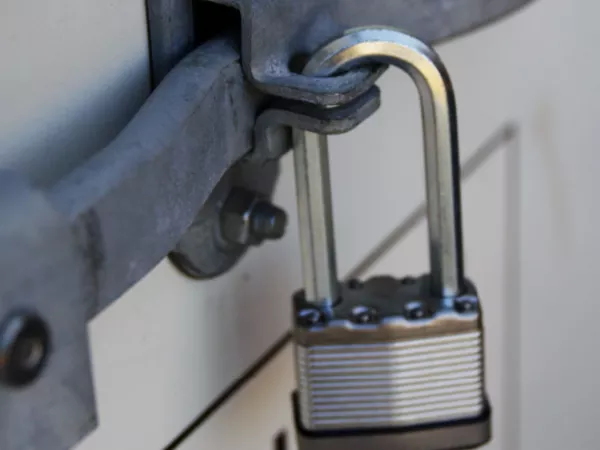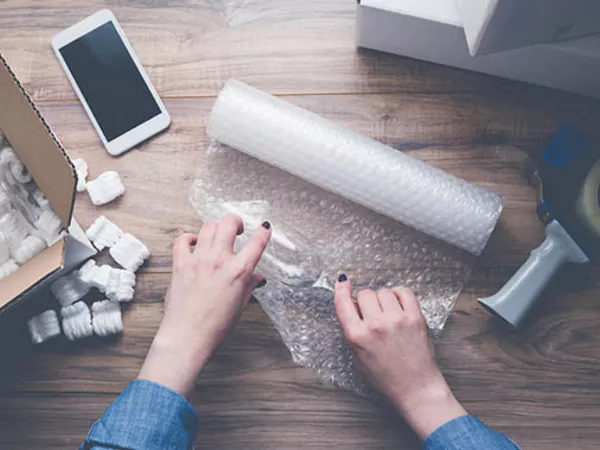Summer Moving Tips: Protecting Things from Heat and Humidity
Don’t let hot, damp weather wreak havoc during your move
Relocating during the summertime is common, but the weather can be challenging depending on where you live. In addition to being uncomfortable, heat and humidity can damage some things in transit if they’re not properly packed.
Knowing how to protect belongings from high temperatures and moisture can help avoid unpleasant surprises while unpacking at the new place.

Planning to move heat- and moisture-sensitive belongings
Many items that can be damaged by heat are included on the Do Not Ship List for most moving services. The lists typically contain things like flammables, perishable food and priceless belongings (antiques, artwork, photographs, etc.).
For everything else, it’s important to know what items are most likely to be harmed by extreme temperatures or moisture buildup and take steps to protect them during the move.
Here are some belongings that might need special attention:
- Bedding
- Books
- Candles and wax melts
- Clothing
- Cosmetics
- Crayons and oil pastels
- Electronics
- Furniture
How to pack for heat and humidity
Now that you know what needs to be protected, let’s look at the best tips for packing things to withstand summertime weather.
1. Know what not to ship
When moving during high temperatures, it’s best to avoid loading meltable things into moving equipment. Keep candles, wax melts, crayons, oil pastels and cosmetics (lipstick, cream foundations, etc.) with you to travel in a personal vehicle.
2. Use weather-resistant packing materials
While it can be tempting to use plastic bins for packing, the containers are more likely to trap moisture than cardboard moving boxes.
To reduce dampness, use a desiccant like silica gel or baking soda packets inside boxes or bins. Packing paper works better than Bubble Wrap® to avoid moisture buildup when moving to or from a humid environment since it is breathable.
To help with heat, line the walls of the moving truck or container with reflective insulated blankets to keep the temperature lower.
3. Protect sensitive items
Any sensitive items transported in moving equipment should be protected against the elements.
Bedding
All fabrics should be clean and dry before packing the linens in cardboard boxes with a desiccant. (The same applies if you’re using vacuum-sealed storage bags.)
Mattresses are best protected in mattress bags.
Books
Condensation can damage the pages, and high temperatures can loosen the glue in books’ bindings. While rare or antique books should travel with you, other books can be moved in breathable cardboard boxes with acid-free packing paper and a desiccant to avoid moisture buildup.
After unloading, open the boxes and allow the books to acclimate to the new environment for 24-48 hours before unpacking.
Clothing
Short-term exposure to water or heat will not harm most clothing. However, mildew and mold could be a problem if fabrics are left damp too long. To avoid issues, ensure that everything is clean and dry, follow best practices for packing clothing and unload items promptly at the new place.
Electronics
If available, use original packaging. When using other packing materials, choose a sturdy box (or a television shipping box when moving large flat screens) with extra room to insulate the item. Include a desiccant to absorb excess moisture.
Furniture
Properly packing furniture for a move protects it from heat and water. Whether moving a sofa or a dresser, how you prepare it depends on the materials.
To avoid damage, wooden and leather items should be completely covered with moving blankets or paper padding before adding a layer of plastic stretch wrap to hold everything in place.
Upholstered furniture can travel with secured moving blankets or paper padding alone to allow the pieces to breathe. However, if you're moving on a rainy day, you might need an extra layer of plastic stretch wrap.
Make sure to unwrap furniture at the new home as soon as possible to release any trapped moisture.
4. Label and load strategically
Label all heat-sensitive items and load them into the equipment last so they can be unloaded first. Keep any items that need lower temperatures in the center of the truck or container, where temperatures are typically cooler.
5. Adjust the timing of the move (if possible)
If you can, handle most loading early or late in the day when the temperature is lower. If you’re using a rental truck, try to travel during cooler times and rest (with the vehicle parked in the shade) during the hottest parts of the day.
If you’re using a moving service in especially hot areas of the country, consider expedited shipping options to reduce prolonged exposure to heat.
6. Unload and inspect belongings promptly
Upon arrival at the new home, unload things immediately and inspect for any damage or dampness.
U-Pack can help with your out-of-state summer move
If you’re planning a long-distance summertime move, U-Pack® is here to help. We’re a DIY moving service with locations in all 50 states.
Our average transit times are only 4-6 business days, meaning your stuff arrives quickly. We also offer guaranteed delivery options if you need a specific timeframe.
Call 844-362-5303844-594-3077 to speak to a moving consultant or request a free, no-obligation quote online. Let us know in the comments if you have any questions.
Prefer warm weather? Make one of these Southern cities your home.
More articles you might like...



